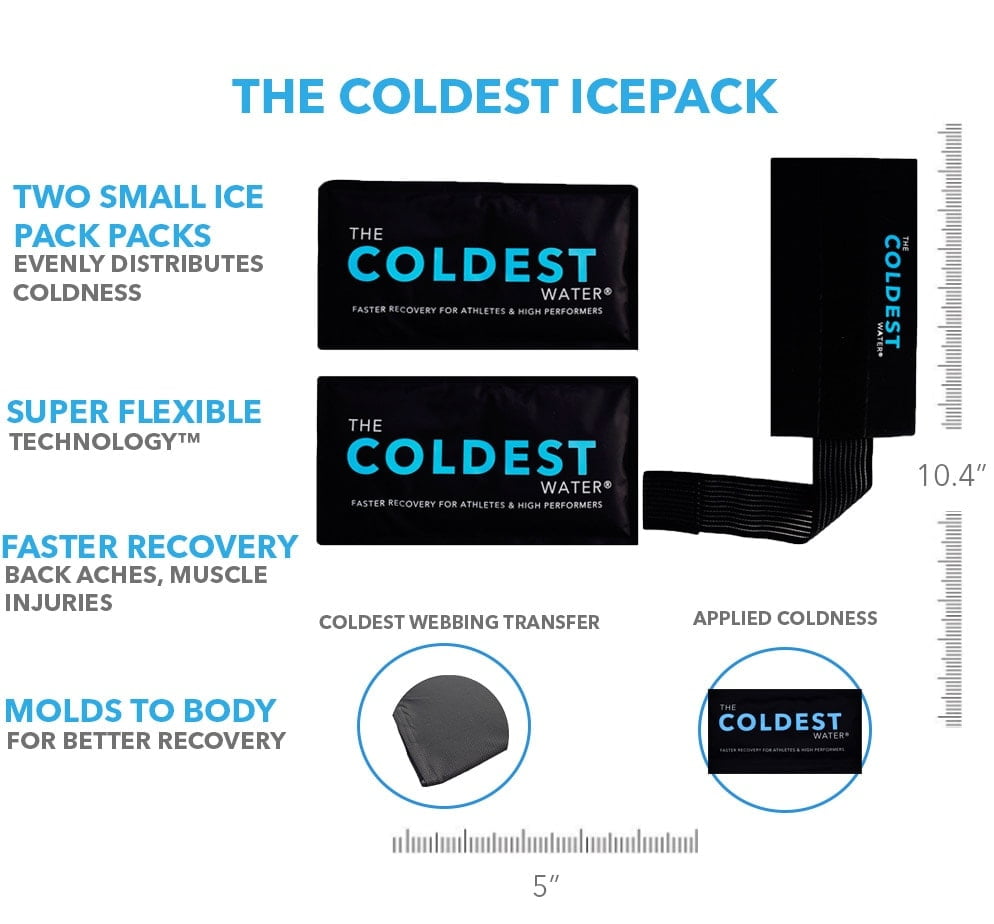7 Truths about Use of Ice and Wounds
The use of ice to treat wounds is as old as the world. Perhaps you have already used it? Here are 7 truths on the use of ice that will help you use it better.
It Reduces the Pain:
Cold reduces the nerve conduction velocity by approximately 33% and increases our tolerance to pain after an application of ± 25 minutes to the ankle. As a result, it is less painful and this advantage of cold could be useful in a context of injury after surgery such as the shoulder or abdomen and after a difficult delivery. Scientific evidence of the analgesic properties of cold known for several types of health problems. Nothing is perfect though. For example, some authors question the cumulative effects, in the medium and long term, of the repeated use of ice. According to them, the relief would only be temporary.

SHOP NOW
Its Effects Are Relatively Superficial:
Applying ice to the calf for 20 minutes would lower skin temperature by 14 to 17 degrees Celsius. The internal temperature of the muscle would only decrease by 4 to 6 degrees. This is a significant difference that challenges the benefits of ice on deeper tissues such as those in the lower back or those under relatively thick adipose tissue.
Care Required During use of Ice:
Avoid use of ice on damaged skin (example: a wound), if its sensitivity is impaired as it is the case in some back problems and if you have a circulatory or systemic disease such as poorly controlled diabetes. Also, remember that the effect of analgesia also cuts you off from your biological alarm system that pain represents.

SHOP NOW
Special Attention Required If You Use It before Practicing A Sport:
Applying more than twenty minutes of ice would reduce speed, power, proprioception, while a ten-minute application would have much less effect on some of these parameters. However, experts recommend testing your body’s reaction for the first time before using it in a sports performance context.
There is no Evidence That It Decreases Inflammation:
Inflammation is a normal and indispensable step in the repair and healing of an injured area. It depends in particular on adequate blood circulation, the lymphatic system, chemical reactions and numerous exchanges between the different human tissues. However, It is a complex phenomenon that is also related to several factors, and that takes place at the site of the lesion. It can also extend to the whole body, as in cases of arthritis.
Even today, inflammation is a poorly understood physiological process. The lack of effective treatment for arthritis is a good example. To date, no scientific study has been able to demonstrate that inflammation diminished by the use of ice application in an injury context. The only studies that have been done on animal skin that was cooled to temperatures below 10 degrees Celsius, which would be impossible to reproduce in humans. Also, the interventions took place only fifteen minutes after the injury of the beast, a scenario that departs considerably from the clinical reality. Ice would also be ineffective at reducing inflammation inside the muscle after intense exercise. Some authors even claim that it would hinder the healing process and overused in the treatment of orthopedic injuries.

SHOP NOW
Ice Pack is more effective at Diminishing or Controlling Swelling:
The application of ice does not decrease joint swelling in an injury context. At least, no study has been able to demonstrate it so far. However, it is generally recognized that compression of the edema region by an ice pack is the most effective way to control and reduce joint swelling caused by inflammation. It is nice to elevate the affected area and to make mild muscle contractions. Note that it is important to treat joint swelling, even if it does not seem to bother you too much. It can lead to secondary problems, including decreased muscle strength and proprioception.
Place Ice Inside a Wet Towel:
If you don’t have the ice packs and want use of ice. During an application, the ice should ideally be wrapped in a damp towel. This would provide a more effective decrease in skin temperature. There is no universal consensus as to the ideal duration and frequency. The type of injury, age, health status, and individual sensitivity are factors that change the game. The 15-20 minutes application usually gives good results in terms of pain reduction. As a general rule, Coldest Ice Packs are more effective in different types of pain.

















